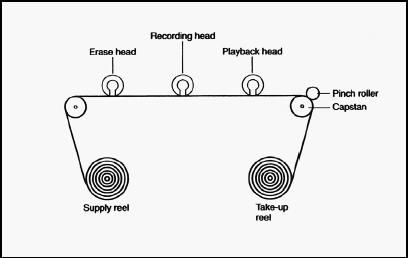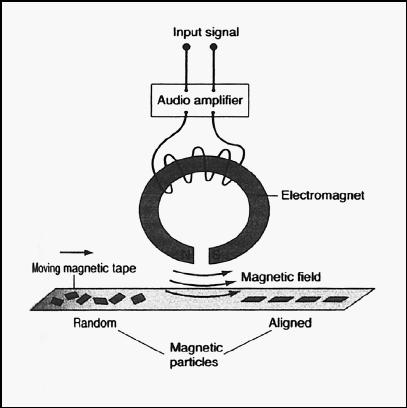MAGNETISM

Most people are familiar with magnets primarily as toys, or as simple objects for keeping papers attached to a metal surface such as a refrigerator door. In fact the areas of application for magnetism are much broader, and range from security to health care to communication, transportation, and numerous other aspects of daily life. Closely related to electricity, magnetism results from specific forms of alignment on the part of electron charges in certain varieties of metal and alloy.
Magnetism, along with electricity, belongs to a larger phenomenon, electromagnetism, or the force generated by the passage of an electric current through matter. When two electric charges are at rest, it appears to the observer that the force between them is merely electric. If the charges are in motion, however—and in this instance motion or rest is understood in relation to the observer—then it appears as though a different sort of force, known as magnetism, exists between them.
In fact, the difference between magnetism and electricity is purely artificial. Both are manifestations of a single fundamental force, with "magnetism" simply being an abstraction that people use for the changes in electromagnetic force created by the motion of electric charges. It is a distinction on the order of that between water and wetness; nonetheless, it is often useful and convenient to discuss the two phenomena as though they were separate.
At the atomic level, magnetism is the result of motion by electrons, negatively charged subatomic particles, relative to one another. Rather like planets in a solar system, electrons both revolve around the atom's nucleus and rotate on their own axes. (In fact the exact nature of their movement is much more complex, but this analogy is accurate enough for the present purposes.) Both types of movement create a magnetic force field between electrons, and as a result the electron takes on the properties of a tiny bar magnet with a north pole and south pole. Surrounding this infinitesimal magnet are lines of magnetic force, which begin at the north pole and curve outward, describing an ellipse as they return to the south pole.
In most atomic elements, the structure of the atom is such that the electrons align in a random manner, rather like a bunch of basketballs bumping into one another as they float in a swimming pool. Because of this random alignment, the small magnetic fields cancel out one another. Two such self-canceling particles are referred to as paired electrons, and again, the analogy to bar magnets is an appropriate one: if one were to shake a bag containing an even number of bar magnets, they would all wind up in pairs, joined at opposing (north-south) poles.
There are, however, a very few elements in which the fields line up to create what is known as a net magnetic dipole, or a unity of direction—rather like a bunch of basketballs simultaneously thrown from in the same direction at the same time. These elements, among them iron, cobalt, and nickel, as well as various alloys or mixtures, are commonly known as magnetic metals or natural magnets.
It should be noted that in magnetic metals, magnetism comes purely from the alignment of

There are five different types of magnetism—diamagnetism, paramagnetism, ferromagnetism, ferrimagnetism, and antiferromagnetism. Actually, these terms describe five different types of response to the process of magnetization, which occurs when an object is placed in a magnetic field.
A magnetic field is an area in which a magnetic force acts on a moving charged particle such that the particle would experience no force if it moved in the direction of the magnetic field—in other words, it would be "drawn," as a ten-penny nail is drawn to a common bar or horseshoe (U-shaped) magnet. An electric current is an example of a moving charge, and indeed one of the best ways to create a magnetic field is with a current. Often this is done by means of a solenoid, a current-carrying wire coil through which the material to be magnetized is passed, much as one would pass an object through the interior of a spring.
All materials respond to a magnetic field; they just respond in different ways. Some non-magnetic substances, when placed within a magnetic field, slightly reduce the strength of that field, a phenomenon known as diamagnetism. On the other hand, there are nonmagnetic substances possessing an uneven number of electrons per atom, and in these instances a slight increase in magnetism, known as paramagnetism, occurs. Paramagnetism always has to overcome diamagnetism, however, and hence the gain in magnetic force is very small. In addition, the thermal motion of atoms and molecules prevents the objects' magnetic fields from coming into alignment with the external field. Lower temperatures, on the other hand, enhance the process of paramagnetism.
In contrast to diamagnetism and paramagnetism, ferro-, ferri-, and antiferromagnetism all describe the behavior of natural magnets when exposed to a magnetic field. The name ferromagnetism suggests a connection with iron, but in fact the term can apply to any of those materials in which the magnitude of the object's magnetic

In an unmagnetized sample, there may be an alignment of unpaired electron spins within a domain, but the direction of the various domains' magnetic forces in relation to one another is random. Once a natural magnet is placed within an external magnetic force field, however, one of two things happens to the domains. Either they all come into alignment with the field or, in certain types of material, those domains in alignment with the field grow while the others shrink to nonexistence.
The first of these processes is called domain alignment or ferromagnetism, the second domain growth or ferrimagnetism. Both processes turn a natural magnet into what is known as a permanent magnet—or, in common parlance, simply a "magnet." The latter is then capable of temporarily magnetizing a ferromagnetic item, as for instance when one rubs a paper clip against a permanent magnet and then uses the magnetized clip to lift other paper clips. Of the two varieties, however, a ferromagnetic metal is stronger because it requires a more powerful magnetic force field in order to become magnetized. Most powerful of all is a saturated ferromagnetic metal, one in which all the unpaired electron spins are aligned.
Once magnetized, it is very hard for a ferro-magnetic metal to experience demagnetization, or antiferromagnetism. Again, there is a connection between temperature and magnetism, with heat acting as a force to reduce the strength of a magnetic field. Thus at temperatures above 1,418°F (770°C), the atoms within a domain take on enough kinetic energy to overpower the forces holding the electron spins in alignment. In addition, mechanical disturbances—for instance, battering a permanent magnet with a hammer—can result in some reduction of magnetic force.
Many of the best permanent magnets are made of steel, which, because it is an alloy of iron with carbon and other elements, has an irregular structure that lends itself well to the ferromagnetic process of domain alignment. Iron, by contrast, will typically lose its magnetization when an external magnetic force field is removed; but this actually makes it a better material for some varieties of electromagnet.
The latter, in its simplest form, consists of an iron rod inside a solenoid. When a current is passing through the solenoid, it creates a magnetic force field, activating the iron rod and turning it into an electromagnet. But as soon as the current is turned off, the rod loses its magnetic force. Not only can an electromagnet thus be controlled, but it is often stronger than a permanent magnet: hence, for instance, giant electromagnets are used for lifting cars in junkyards.